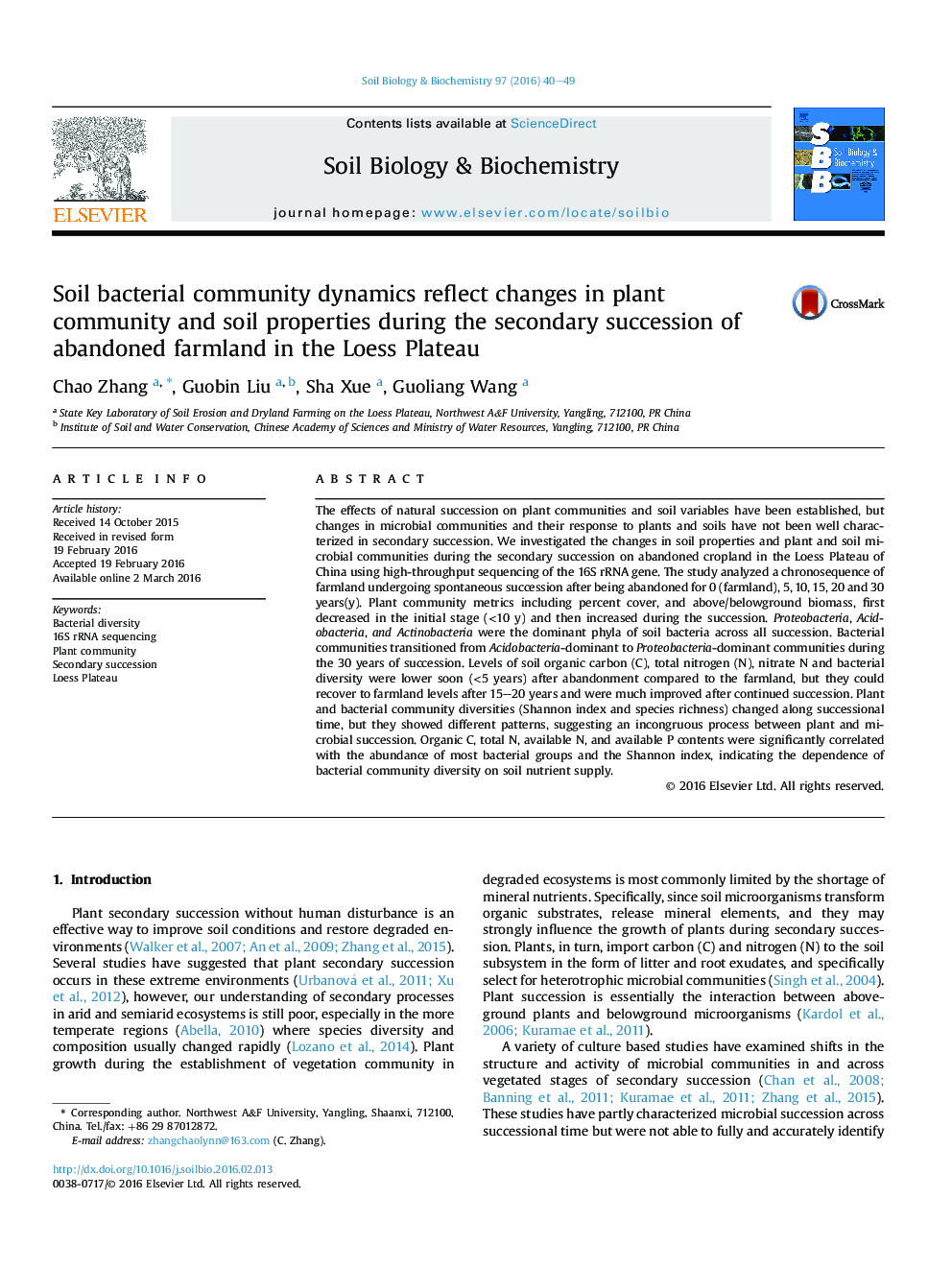| Article ID | Journal | Published Year | Pages | File Type |
|---|---|---|---|---|
| 2024318 | Soil Biology and Biochemistry | 2016 | 10 Pages |
•High-throughput 16S rRNA sequencing was used for bacterial community characterization.•Diversities of plant community and bacterial community varied differently.•Soil bacterial diversity can recover to farmland levels after 15–20 years succession.•Bacterial community diversities are highly dependent on the nutrient supply in soils.
The effects of natural succession on plant communities and soil variables have been established, but changes in microbial communities and their response to plants and soils have not been well characterized in secondary succession. We investigated the changes in soil properties and plant and soil microbial communities during the secondary succession on abandoned cropland in the Loess Plateau of China using high-throughput sequencing of the 16S rRNA gene. The study analyzed a chronosequence of farmland undergoing spontaneous succession after being abandoned for 0 (farmland), 5, 10, 15, 20 and 30 years(y). Plant community metrics including percent cover, and above/belowground biomass, first decreased in the initial stage (<10 y) and then increased during the succession. Proteobacteria, Acidobacteria, and Actinobacteria were the dominant phyla of soil bacteria across all succession. Bacterial communities transitioned from Acidobacteria-dominant to Proteobacteria-dominant communities during the 30 years of succession. Levels of soil organic carbon (C), total nitrogen (N), nitrate N and bacterial diversity were lower soon (<5 years) after abandonment compared to the farmland, but they could recover to farmland levels after 15–20 years and were much improved after continued succession. Plant and bacterial community diversities (Shannon index and species richness) changed along successional time, but they showed different patterns, suggesting an incongruous process between plant and microbial succession. Organic C, total N, available N, and available P contents were significantly correlated with the abundance of most bacterial groups and the Shannon index, indicating the dependence of bacterial community diversity on soil nutrient supply.
